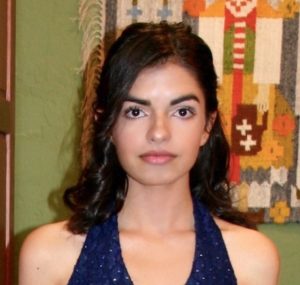 CWEA is excited to announce that Visala Tallavarjula of Santa Clara, California will once again represent the state of California for her project titled, “Irrigation Water Usage Efficiency Improvement by Modification of Root Zone Soil Properties Using Carbon Sequestration.”
CWEA is excited to announce that Visala Tallavarjula of Santa Clara, California will once again represent the state of California for her project titled, “Irrigation Water Usage Efficiency Improvement by Modification of Root Zone Soil Properties Using Carbon Sequestration.”
Visala was California’s winner in 2016, 2017 and this year!
Visala Tallavarjula, one of 57 state winners announced by the Water Environment Federation (WEF), will represent California in the national finals June 16 at the University of North Carolina at Charlotte, where students from 47 states and Puerto Rico will be competing. The winner will receive $10,000 and an all-expenses-paid trip to Stockholm to represent the United States at the international competition during World Water Week on August 26-31.
The competition is open to public, private, or independent high school students in grades 9-12, that have reached the age of 15 by Aug. 1 of the competition year, and have conducted water-related science projects. Judging criteria are the same as the international competition and include ratings for relevance, methodology, subject knowledge, practical skills, creativity and paper/presentation.
We wish Visala the best of luck at the national competition!
The Stockholm Junior Water Prize aims to increase students’ interest in water issues, research, and careers, as well as to raise awareness about global water challenges. The competition is open to projects focused on improving water quality, water resource management, water protection, and drinking water and wastewater treatment.
“These are some of our country’s most intelligent students, and the innovation and creativity reflected in their projects is truly amazing,” said Eileen O’Neill, WEF Executive Director. “If the work of these young scientists is any indication, the future of water science and research is indeed bright.”
CWEA also awards the second and third place winners with cash prizes. Congratulations to:
Second Place: Hunter Crawford-Shelmadine for the project titled, “A Comparative Study of How Byproducts Produced by the Removal of Oxybenzone from Fresh Water by Constructed Wetlands and Laccase/ABTS Alginate Beads Impact the Mortality of Daphnia magna.”
Third Place: Shloka Janapaty for the project titled, “A Novel, Fast, Low-Cost Approach to Achieve Near 100% LDPE Degradation using Synthetic Landfill Leachate.”
Visala Tallavarjula
ABSTRACT
Irrigation consumes more than 80% of the world’s fresh water. The exploding global population and increasing food demands lead to water shortage. Irrigation efficiency improvement will help to mitigate water stress. My previous top soil bed method showed up to 25% evaporation loss reduction, and a low cost infiltration insert innovation enabled sub-surface-like irrigation without requiring expensive equipment. Current project studies the effects of root zone soil modification on water retention using a percolation control layer (PCL). Charcoal amendment improves water retention, root health, and microbial activity while achieving carbon sequestration, which reduces greenhouse gas emission and climate change. The design of experiments’ study was conducted by varying PCL thickness, percentage of charcoal amendment, and the grain size of charcoal added. The higher the PCL thickness, the charcoal amendment percentage, and the lower the charcoal grain size, the higher the water retention. With 33% charcoal amendment, 4 cm PCL thickness, and two charcoal grain sizes, field tests were conducted with radish plants. The PCL with coarse grain charcoal amendment showed 49% lower water consumption while also producing 50% higher yield.
The Stockholm Junior Water Prize (SJWP) is considered the world’s most prestigious award presented to a high school student for a water-research project. The Water Environment Federation (WEF) has coordinated the U.S. competition since its inception in 1997, and partners closely with their Member Association (MA) to execute the program.
Initially a paper competition from 1997-2001, the eligible projects were gleaned from the regional and state international Science and Engineering Fair (ISEF) by Member Association (MA) appointed judges. In 2002, the MAs sent their state winners to the first onsite event that was jointly hosted in Dallas, TX by WEF and the Water Environment Association of Texas. The event was modeled after the international event, including three days of competition and social activities, and up until 2013, was the U.S. model.
For more information on the Stockholm Junior Water Prize: https://bit.ly/2rr0p29
For a list of state winners: https://bit.ly/2I2AC7H